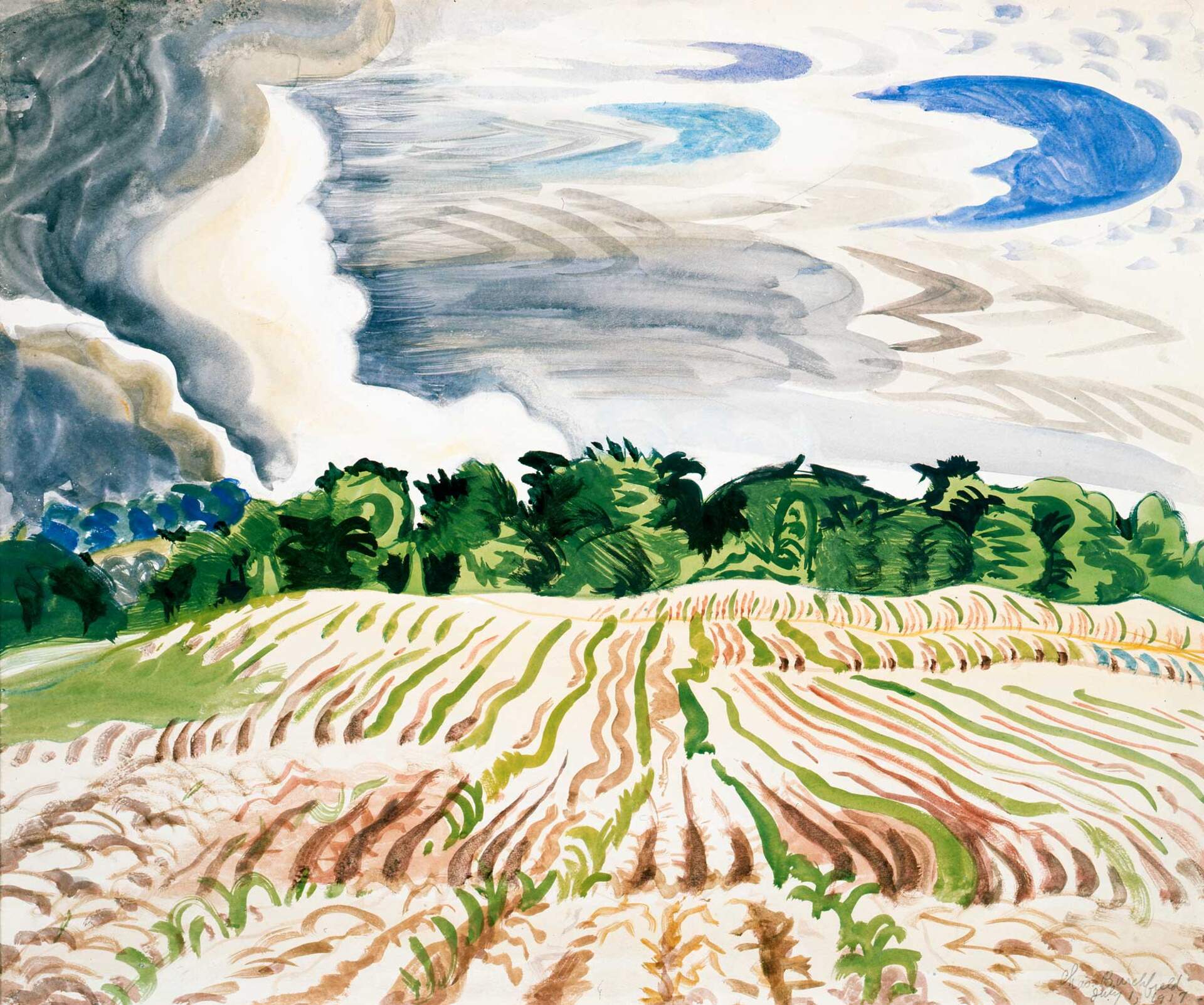Charles E. Burchfield (1893-1967)Clearing Sky
July 13, 1917
watercolor, gouache and pencil on paper
17 5/8 x 21 1/2 inches (Frame: 23 1/2 x 27 1/2 inches)
Burchfield Penney Art Center, Gift of Charles Rand Penney, 1994
The wind is blowing from right-to-left in this image, as shown by the numerous chevron or crescent shapes in the sky – classic symbol of movement used by Charles Burchfield. To the left of the painting are dark towering cumulonimbus (Cb) clouds. These are clouds of vertical development that can produce severe weather – heavy rains, flooding, thunderstorms, hail, and tornadoes. ‘Nimbus’ is a reference to rain. These clouds can rise to heights that dwarf Mount Everest and even reach to the top of the Earth’s troposphere – 10 miles above the surface. It is only during the warm seasons that the sun has enough energy to sufficiently heat the Earth’s surface to produce these types of clouds. In meteorology wind can be an indicator of changing weather, and in this case the indication is that the day is getting better. This painting can be interpreted broadly as a metaphor for a positive change. (text from Weather Event)
Charles Burchfield called 1917 his “golden year” for two reasons. It was one of his most prolific years for painting, but more importantly, he experimented with a more flamboyant style. He devised a set of symbols he called “Conventions for Abstract Thoughts” that he incorporated into artworks. Clearing Sky exemplifies many of his landscapes that convey exaggerated observations made from nature and evolving weather patterns. During this period Burchfield also tried to make sound visible in animated shapes and he gave personalities to inanimate objects. The spirit of bluebirds sweeps across the sky away from winged clouds in this farmland scene. (Nancy Weekly)
